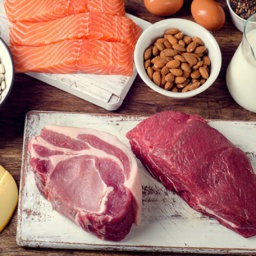
Looking to start taking your fitness routine up a notch this year? We’ve got you covered. To gain muscle and strength, athletes and gym-goers alike go through strategic periods of weight gain and loss (also known as bulking and cutting). Curious to see if one (or both) of these phases may be something you want to explore? Keep reading for all the info you need to know to make an informed decision.
What is Bulking?
Bulking is a specified period of eating in a significant calorie surplus (i.e., you’re eating more than you burn). This is done by attempting to up your intake of three major macros: fat, carbs and especially protein. The goal here is to gain weight, primarily due to increased muscle mass, but you could also see gains from fat during this time.
What is Cutting?
Cutting is generally what follows a bulk. This is where your discipline is going to be crucial, but so worth it! During this phase, you need to ensure you’re maintaining a caloric deficit (i.e., you’re consuming less than your body is burning). Watching your macos during this time is key. For optimal results, your protein intake should be higher than your carb intake.
How to Start Each Phase
Bulking
When looking to start a bulk, you need to first determine your maintenance calories (the number of calories you need to maintain your weight). There are various calculators online that can actually do this math for you!
Once you determine your maintenance calories, tack on a 10-20% calorie surplus. Try and aim for a daily protein intake of 0.7-1 gram per pound of body weight to help support muscle gain. The rest of your calories should be comprised of carbs and fats (but that’s personal preference!)
In terms of progress, you should be looking for a weight gain of 0.25-0.5% of body weight per week. If you aren’t seeing any progress after a few weeks, increase your calorie intake by 100-200 calories.
Depending on your goals, a bulk should last anywhere from 1 to 6 months (or longer).
Cutting
Similar to how you’d start a bulk, you need to determine your maintenance calories. From there, rather than add calories, you’ll subtract a specific number of calories each day. In other words, you’ll eat fewer calories than you need to maintain your weight.
To stimulate weight loss, a general rule is to consume 300-500 calories below maintenance to help lose approximately 1 pound per week – but this can vary depending on individual body composition!
In addition to gradual calorie restriction, cutting phases also generally include some form of cardio to provide added fat loss.
A cutting phase should definitely be shorter than a bulking phase, lasting usually 2-4 months.
Pros & Cons
There are always pros and cons to anything – even bulking and cutting. Here are some important things to consider with both phases.
Bulking
| Pros | Cons |
| Promotes muscle gain | May lead to excess fat gains |
| Increases strength | Can affect blood values |
| Increases bone density | May make you feel sluggish |
| Allows for efficient recovery from exercise | Can decrease insulin sensitivity |
Cutting
| Pros | Cons |
| Promotes fat loss | Slight muscle loss is common |
| Improves muscle appearance | May feel hungry |
| Promotes improvement in blood values | Can decrease bone density |
| Allows for better movement | May affect sleep quality |
When you’re trying to decide if a bulk or cut is right for you, it’s important to ultimately consider your starting point and long-term goals. If you’re new to exercising, perhaps just following a relatively structured diet, and increasing your exercising intensity is a good place to start before you dive into a bulk or cut. Once you’ve developed good practices surround food and exercise, you can consider whether a bulk or cut may be the appropriate next step in your fitness routine!
Increasing the amount of exercising you’re doing this year? Check out these 6 essential nutrients for active people you may want to supplement into your diet for optimal performance and results!

Hayleigh Butcher is a Content Writer & Brand Strategist for Blender Networks. When she’s not managing blogs for FitMinutes, The-E-Tailer, Cartageous, InStyleRooms, NurturedPaws & Shoelistic, she’s finding a new trail to hike with her dog, Gemma or finding the best new spot in her hometown of Bedford, Nova Scotia for an iced coffee!















